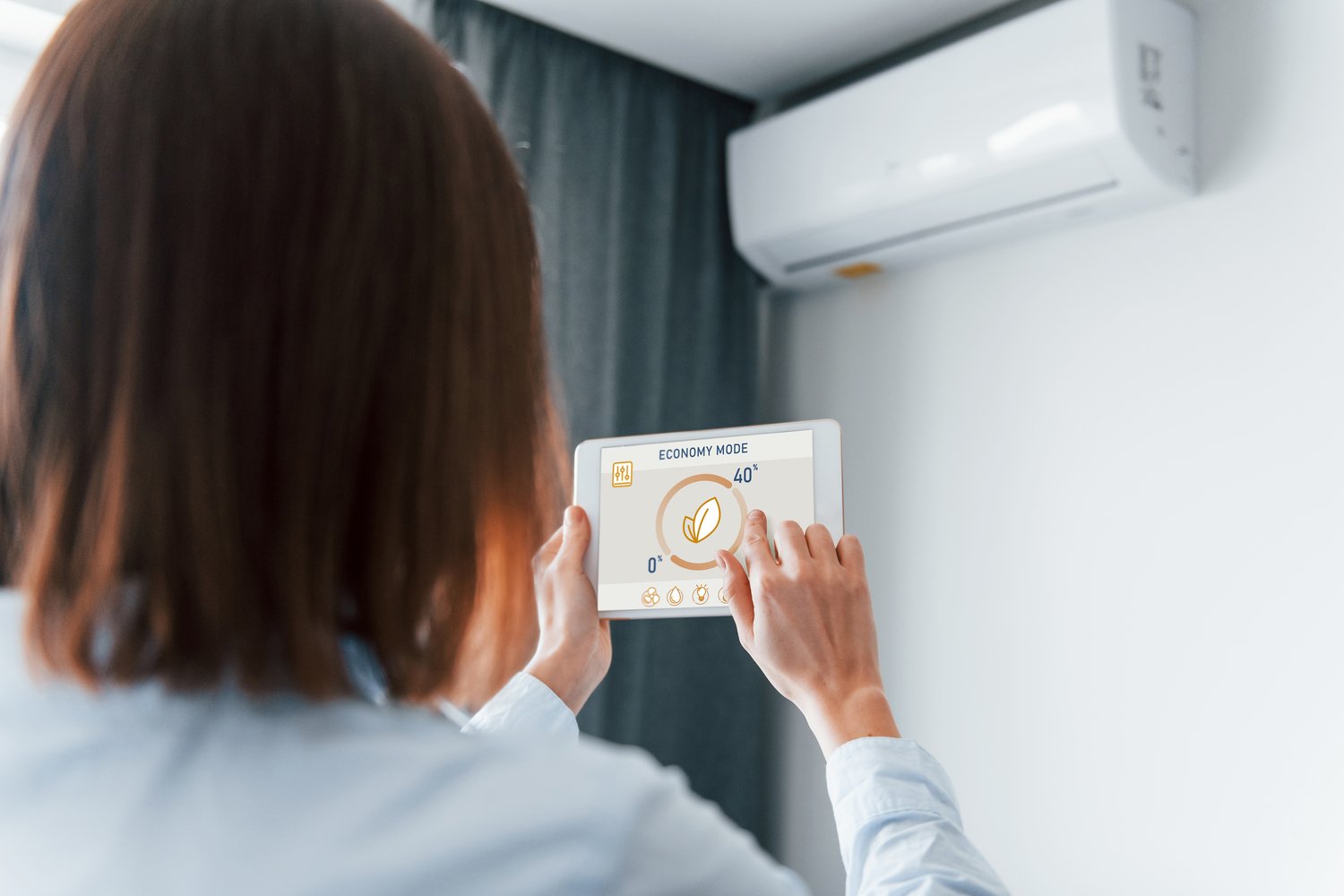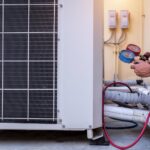Understanding air conditioning basics
Air conditioning is essential for maintaining comfortable indoor temperatures. These systems work by removing heat and moisture from the air. Modern units offer various features like programmable thermostats and energy-saving modes. The efficiency of an air conditioner is measured by its SEER rating, with higher numbers indicating better performance. Air conditioning https://onninen.pl/en/products/Air-conditioning-and-ventilation/Air-conditioning systems come in different types, including central, ductless, and portable units. Each type has its advantages and is suited for specific environments. Proper sizing is crucial for optimal performance and energy efficiency.
When selecting an air conditioner, consider the size of your space. A unit that’s too small will struggle to cool effectively, while an oversized one may cycle on and off frequently, wasting energy. The average lifespan of an air conditioner is 10-15 years with proper maintenance. Regular servicing can extend this lifespan and improve efficiency. Energy Star certified models can save up to 15% on cooling costs compared to standard units. Air conditioners also help improve indoor air quality by filtering out dust and allergens.
Installation costs vary depending on the type of system and complexity of the setup. Central air conditioning installation typically ranges from $3,000 to $7,000. Ductless mini-split systems usually cost between $2,000 and $14,500. These costs include both equipment and labor. Many manufacturers offer warranties ranging from 5 to 10 years on parts. Some utility companies provide rebates for installing energy-efficient air conditioning systems. It’s important to factor in long-term operating costs when choosing a system.
Air conditioners use refrigerants to cool the air. Modern units use environmentally friendly refrigerants like R-410A. Older systems may still use R-22, which is being phased out due to environmental concerns. The cooling capacity of air conditioners is measured in BTUs (British Thermal Units). A typical room air conditioner ranges from 5,000 to 12,000 BTUs. Central air systems can provide 18,000 to 60,000 BTUs or more. Proper insulation in your home can significantly improve air conditioning efficiency.
Some air conditioners come with additional features like dehumidification and air purification. These can be particularly beneficial in humid climates or for allergy sufferers. Smart air conditioners can be controlled via smartphone apps, allowing remote temperature adjustments. Some models integrate with home automation systems for seamless operation. Variable-speed compressors offer more precise temperature control and improved energy efficiency. Dual-stage cooling systems provide better humidity control and comfort.
Exploring wall air conditioners for residential use
Wall air conditioners are a popular choice for homes without central air systems. These units are installed directly through an exterior wall, providing efficient cooling for individual rooms. Wall air conditioners https://onninen.pl/en/products/Air-conditioning-and-ventilation/Air-conditioning/Wall-air-conditioners are more permanent than window units but less complex than central systems. They typically range from 8,000 to 24,000 BTUs, suitable for rooms up to 1,500 square feet. Most wall units measure between 14 and 20 inches in height and 18 to 24 inches in width.
Installation of wall air conditioners requires creating an opening in the exterior wall. This process usually takes 2-3 hours for a professional installer. The average cost of a wall air conditioner, including installation, ranges from $700 to $2,000. These units are more energy-efficient than window air conditioners, as they create a tighter seal. Many wall air conditioners come with remote controls for convenient operation. Some models feature programmable timers, allowing users to set cooling schedules.
Wall air conditioners typically have a lifespan of 10-15 years with proper maintenance. Regular cleaning of the filter and coils can improve efficiency and longevity. These units often have washable filters that should be cleaned monthly during the cooling season. Some wall air conditioners offer both cooling and heating functions, providing year-round comfort. The noise level of wall units is generally lower than that of window air conditioners, typically ranging from 50 to 60 decibels.
Energy-efficient wall air conditioners can have SEER ratings of 12 or higher. Higher SEER ratings indicate greater energy savings over time. Some models feature sleep modes that gradually increase temperature overnight for improved comfort and energy savings. Wall air conditioners with variable-speed fans offer more precise temperature control. These units can maintain a more consistent temperature compared to single-speed models. Some wall air conditioners include ionizers or other air purification technologies.
When choosing a wall air conditioner, consider the direction of sunlight in the room. Units placed in direct sunlight may need to work harder to cool the space. Wall air conditioners should be installed on exterior walls for optimal performance. These units require a dedicated electrical circuit, typically 115 or 230 volts. Some municipalities may require permits for installing wall air conditioners. It’s important to check local building codes before installation.
Commercial air conditioning solutions for businesses
Commercial air conditioners are designed to cool larger spaces efficiently. These systems are crucial for maintaining comfortable environments in offices, retail stores, and industrial facilities. Commercial air conditioners https://onninen.pl/en/products/Air-conditioning-and-ventilation/Air-conditioning/Commercial-air-conditioners come in various types, including rooftop units, split systems, and VRF (Variable Refrigerant Flow) systems. The cooling capacity of commercial units typically ranges from 3 to 50 tons, with one ton equaling 12,000 BTUs. Large commercial systems can provide over 100 tons of cooling.
Rooftop units are popular for commercial buildings due to their space-saving design. These systems combine heating and cooling functions in a single unit. The average lifespan of a commercial air conditioner is 15-20 years with proper maintenance. Regular servicing, including filter changes and coil cleaning, is essential for optimal performance. Commercial air conditioning systems often incorporate advanced controls for zone-specific temperature management. This allows for customized comfort in different areas of a building.
Energy efficiency is a key consideration in commercial air conditioning. High-efficiency systems can significantly reduce operating costs over time. Many commercial air conditioners now use environmentally friendly refrigerants like R-410A or R-32. The initial cost of a commercial air conditioning system can range from $5,000 to over $200,000, depending on size and complexity. Installation costs typically account for 30-50% of the total project cost. Many businesses opt for preventive maintenance contracts to ensure consistent performance.
Commercial air conditioning systems often integrate with building management systems (BMS) for centralized control. These integrations can optimize energy use and provide detailed performance data. Some commercial systems include heat recovery features, using waste heat for other purposes. Variable Refrigerant Flow (VRF) systems offer high efficiency and flexibility for large commercial spaces. These systems can simultaneously heat and cool different zones within a building. Air conditioning and ventilation https://onninen.pl/en/products/Air-conditioning-and-ventilation are crucial for maintaining indoor air quality in commercial settings.
When selecting a commercial air conditioning system, consider factors like building size, occupancy patterns, and local climate. Proper sizing is critical to avoid inefficiencies and inadequate cooling. Many commercial systems offer economizer modes, which use outside air for cooling when conditions are favorable. This can significantly reduce energy consumption. Some commercial air conditioners incorporate demand-controlled ventilation, adjusting airflow based on occupancy. Advanced filtration systems in commercial units can remove particulates as small as 0.3 microns, improving indoor air quality.





